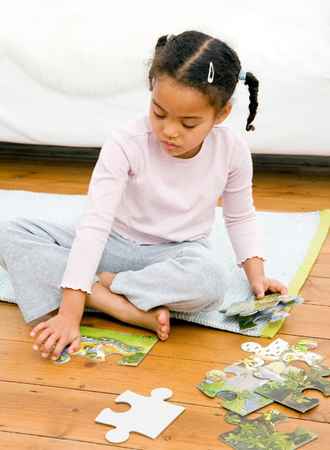As technology continues to advance, electronic toys have become increasingly popular among parents and caregivers for young kids. With bright lights, catchy music, and interactive features, it’s no wonder that electronic toys fill the toy aisle and are often seen as fun and engaging playthings for babies.
However, as the use of battery-operated toys becomes more widespread, concerns have arisen about their potential impact on child development. In particular, many parents wonder whether light-up toys can have a negative effect on their baby’s development.
In this blog post, we’ll explore the question of whether electronic toys are bad for babies, and take a closer look at the potential effects of light-up toys on child development.
Key Takeaways on How Electronic Toys Affect A Child’s Developmental Stage
- Electronic toys commanding children’s attention can be fun and engaging for babies, but it is important to keep their potential impact on development in mind.
- Light-up toys can have both positive and negative effects on a child’s development depending on how they are used.
- It is important to be aware of the risks associated with electronic toys such as overstimulation, choking hazards, and exposure to toxic chemicals.
Do Light Up Toys Affect Child Development and Literacy Skills?
Light-up toys, like any other toys, can have both positive and negative effects on child development depending on how they are used and the age of the child.
For infants and toddlers, light-up toys can provide visual stimulation and help develop their hand-eye coordination. The flashing lights and bright colors can capture their attention and improve their visual tracking abilities.
However, it is important to note that excessive use of light-up toys can lead to overstimulation and sensory overload, which can negatively affect development. It is recommended to limit screen time and exposure to electronic toys in young children.
For older children, tech toys can still provide entertainment and sensory stimulation, but they may also detract from other important developmental activities such as imaginative play and physical activity.
Some light-up and talking toys may promote passive entertainment and don’t teach social skills. Children need open-ended toys that encourage verbal back and forth and language development to improve their language skills.

Do Light Up Toys Count as Screen Time?
No, light up toys do not count as screen time. Light up toys are a physical activity that encourages the youngest kids to use their imagination and engage in open-ended play. These types of toys can help develop motor skills, problem solving abilities, and creativity without exposing them to the same type of digital stimulation found with screens.
Instead of relying on electronic devices for entertainment, traditional toys such as wooden blocks and wooden trains provide an alternative form of engagement that is both fun and educational.
Are Electronic Toys Ok for Babies?
Electronic toys such as a talking farm, baby laptop or a baby cell phone can be a great way to engage and entertain babies and very young children, but they should always be used with caution. These toys often contain small parts that could pose a choking hazard for young children.
However, high-tech toys are not the best toys to teach children language. A recent research conducted by Northern Arizona university found that found that children who played with electronic toys had fewer parent-child communicative interactions than those who played with books. They also learned fewer words.
Noisy and flashy toys easily grab children’s attention easily. This primitive reflex compels to focus on new sights and sounds. However, a new research study published in JAMA Pediatrics suggests that these toys may not only capture kids’ attention but also decrease rich communicative interaction between parents and children.
Dr. Jenny Radesky, of the University of Michigan Medical School, and Dr. Dimitri Christakis, of Seattle Children’s Hospital, wrote that conversational turns during play provide numerous benefits for children beyond language acquisition, including the development of literacy and social skills, and giving parents insight into their child’s learning and development. However, the study does not address how nonverbal interactions, which are also crucial for social and emotional skills, differ based on the type of toy being used.

What Are the Risks of Electronic Toys?
Research shows that an electronic toy can be overstimulating for young children. With flashing lights, loud noises and a plethora of buttons to press, these types of toys can easily overwhelm little ones. This type of stimulation can lead to difficulty focusing on tasks or even cause sensory overload in some cases.
Poor quality materials are also a risk associated with electronic toys. Many contain small parts that could pose choking hazards and may not meet safety standards set by organizations such as the Consumer Product Safety Commission (CPSC).
Additionally, many of these toys use plastic components that may contain toxic chemicals like BPA or phthalates which have been linked to health issues in humans and animals alike.
While light-up toys may offer some educational benefits, such as promoting sensory development, there are also potential disadvantages of educational toys, such as overstimulation and a lack of opportunity for children to use their imagination and creativity.
Finally, these toys often limit a child’s imagination and creativity due to their pre-programmed nature. Instead of encouraging open-ended play where kids can create their own stories and scenarios, these types of toys typically provide only one specific outcome when used, making it difficult for children to explore their imaginations freely without boundaries or restrictions.
3 Alternatives to Light Up Toys
Here are traditional toys that make for good alternatives to light up toys:
Open-Ended Play
Open-ended traditional toys such as blocks, dolls, and action figures are great alternatives to light up toys. These types of toys allow children to use their imaginations and create stories with the characters they’ve created. Blocks can also help teach children about spatial relationships and problem solving skills. Dolls and action figures can be used for pretend play scenarios that encourage social interaction between siblings or friends.
Simple toys and book-reading that encourage social development through turn taking and accepting others’ leads, teach role-playing and other language facilitating activities can provide many other developmental benefits.
Puzzles and Games
Puzzles are extremely effective at challenging your child’s cognitive development while providing potential benefits that doesn’t involve screens or lights. From jigsaw puzzles to board games, there is something for every age group that will keep them entertained for hours on end without relying on technology or batteries.

Arts and Crafts
Arts and crafts supplies, such as crayons, markers, paint sets, paper, glue sticks and other traditional items, provide endless possibilities for creative expression in children of all ages. Drawing a picture or creating something from recycled materials found around the house can stimulate imagination while also developing fine motor skills.

Are Bright Toys Better for Babies?
Yes, bright toys are better for babies. They stimulate their senses and help them learn about the world around them. Bright colors can also help to capture a baby’s attention and encourage exploration of their environment.
Traditional toys, especially those made from wood, provide tactile stimulation which helps to develop motor skills as well as cognitive development. You can also buy five board books with farm animal and different color themes, rubber blocks, wooden puzzle, building blocks or a shape sorter set.




